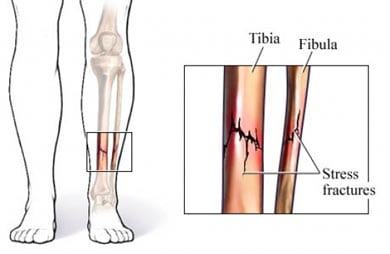

Study author Jessica Hunter, Ph.D.(c), and her colleagues predicted that running continuously at a moderate speed would have the same impact on the legs as running the same distance half-fast and half-slow.
#Stress fracture shin workouts free#
To calculate this number, they multiplied the outcome of three variables: tibial load (the pressure applied to the tibia during ground contact), vertical average loading rate (how quickly your body weight is applied to the leg as your foot makes contact with the ground), and free moment (the motion of the bottom of the foot on the ground). The researchers were interested in finding the runners’ cumulative tibia load at the various speeds. Then, they began the trial, running over force plates embedded on the track that measured how much impact their shins bore with each stride.


Each wore reflective sensors on their pelvis, below the knee of their dominant leg, and on both of their feet. In the study, 43 recreational runners-29 women and 14 men, ages 18 to 49 years old-were asked to run around a 50-meter indoor track at a self-selected speed of fast (but not all-out sprint), moderate, and slow for three laps each. Play icon The triangle icon that indicates to playīut that might not actually be the case: According to new research from the University of Maryland, fast-paced running doesn’t put any more pressure on the tibia (shin bone)-a common site of stress fractures-than easy running.


 0 kommentar(er)
0 kommentar(er)
